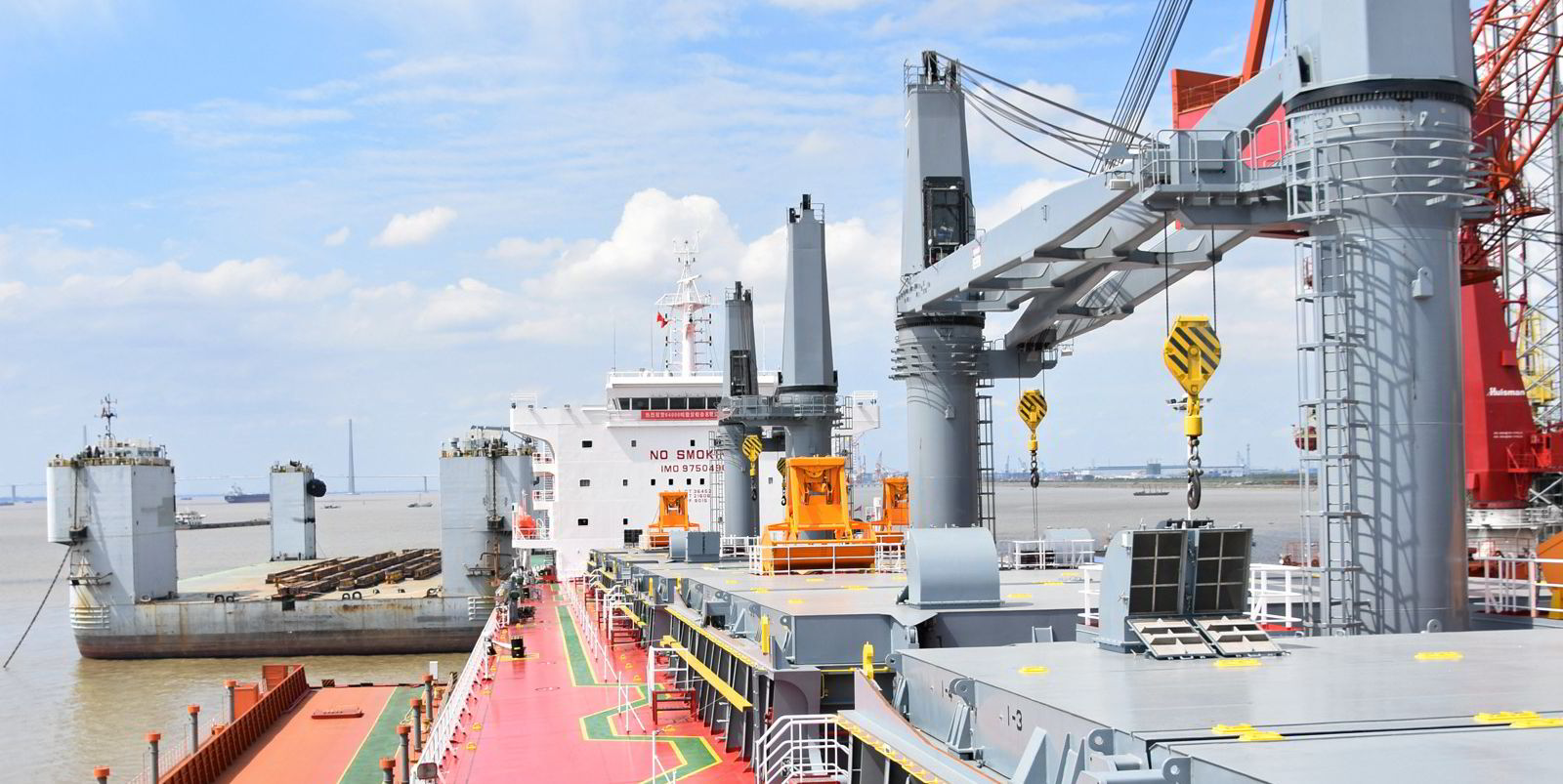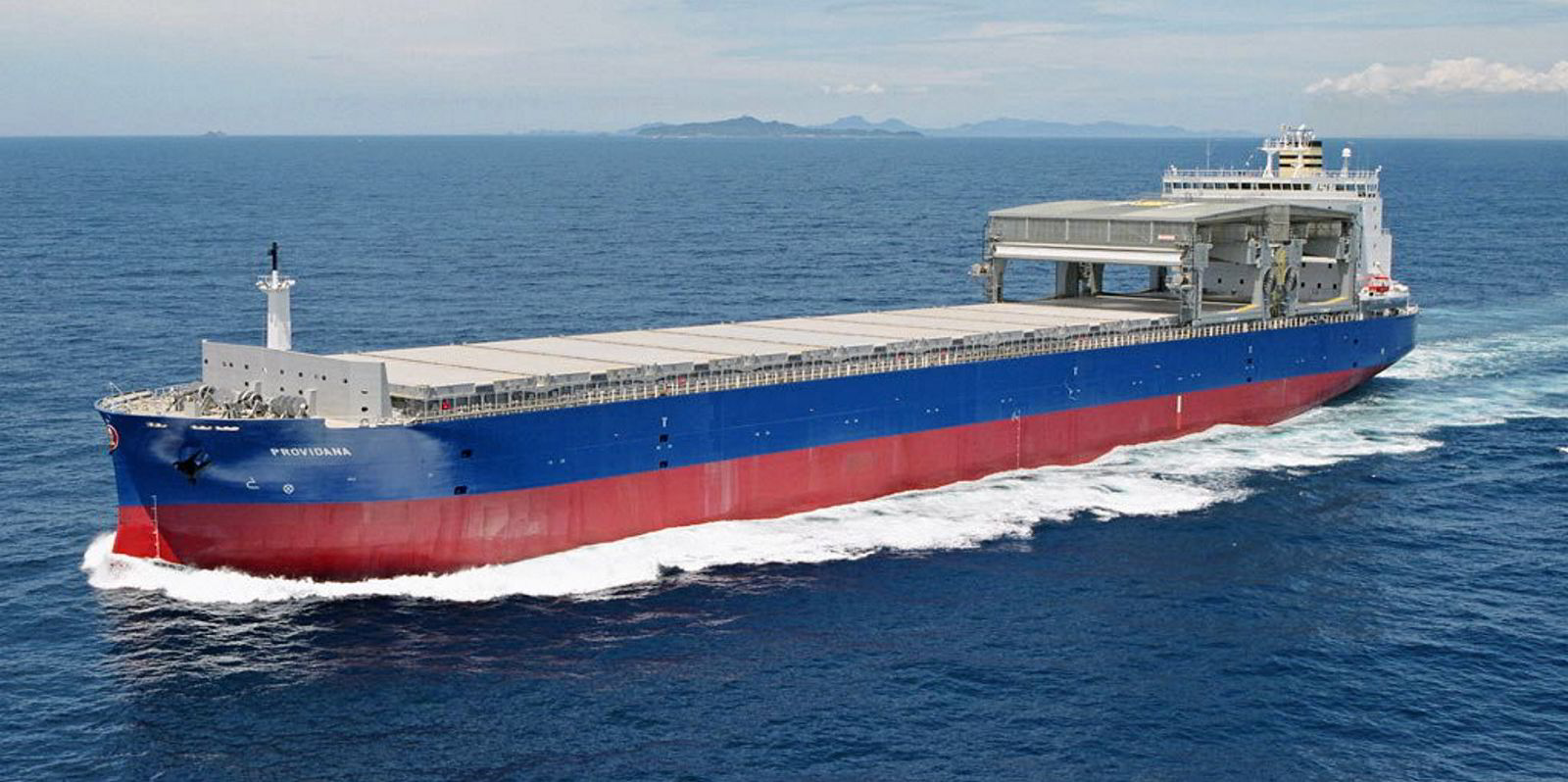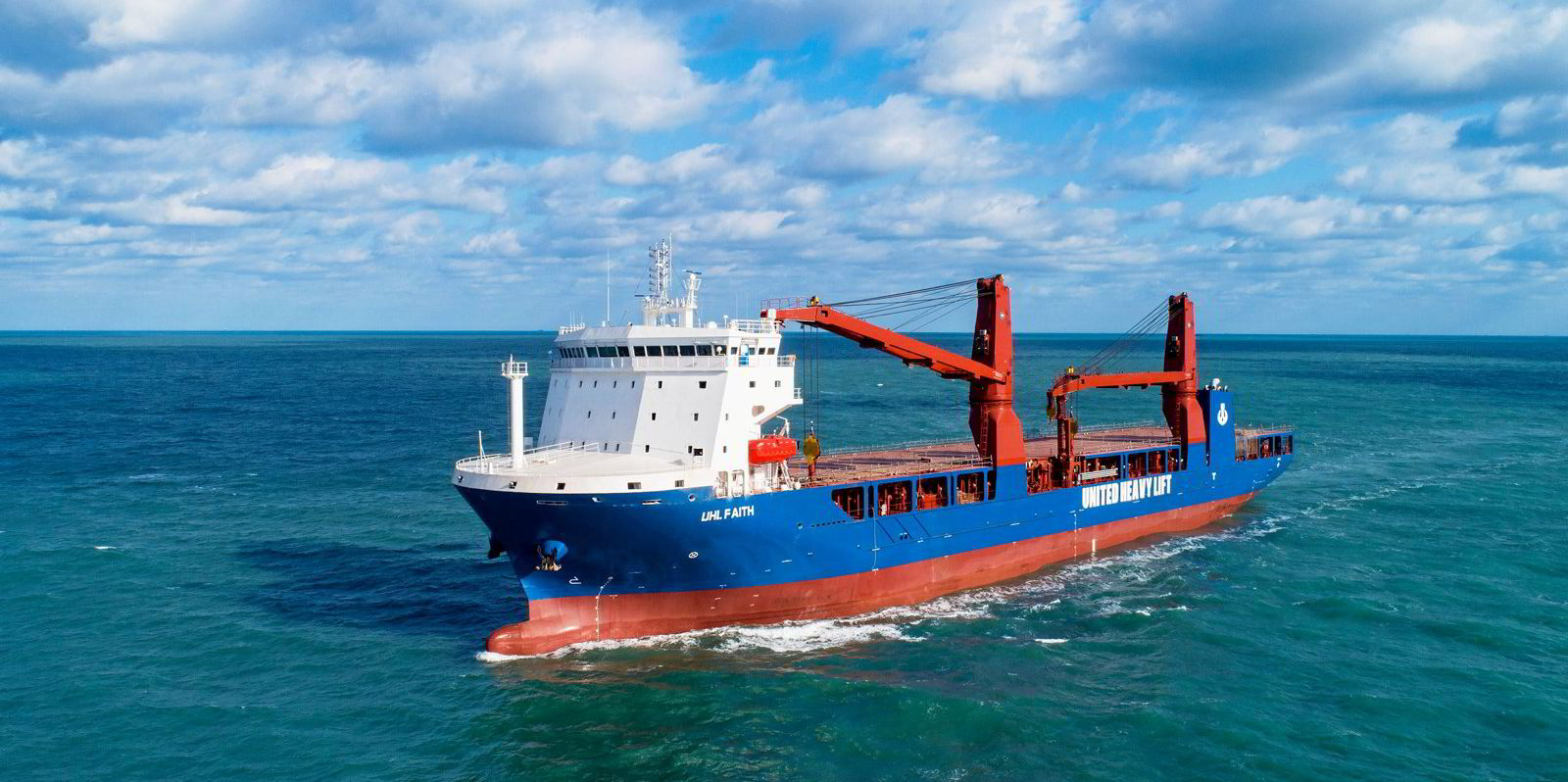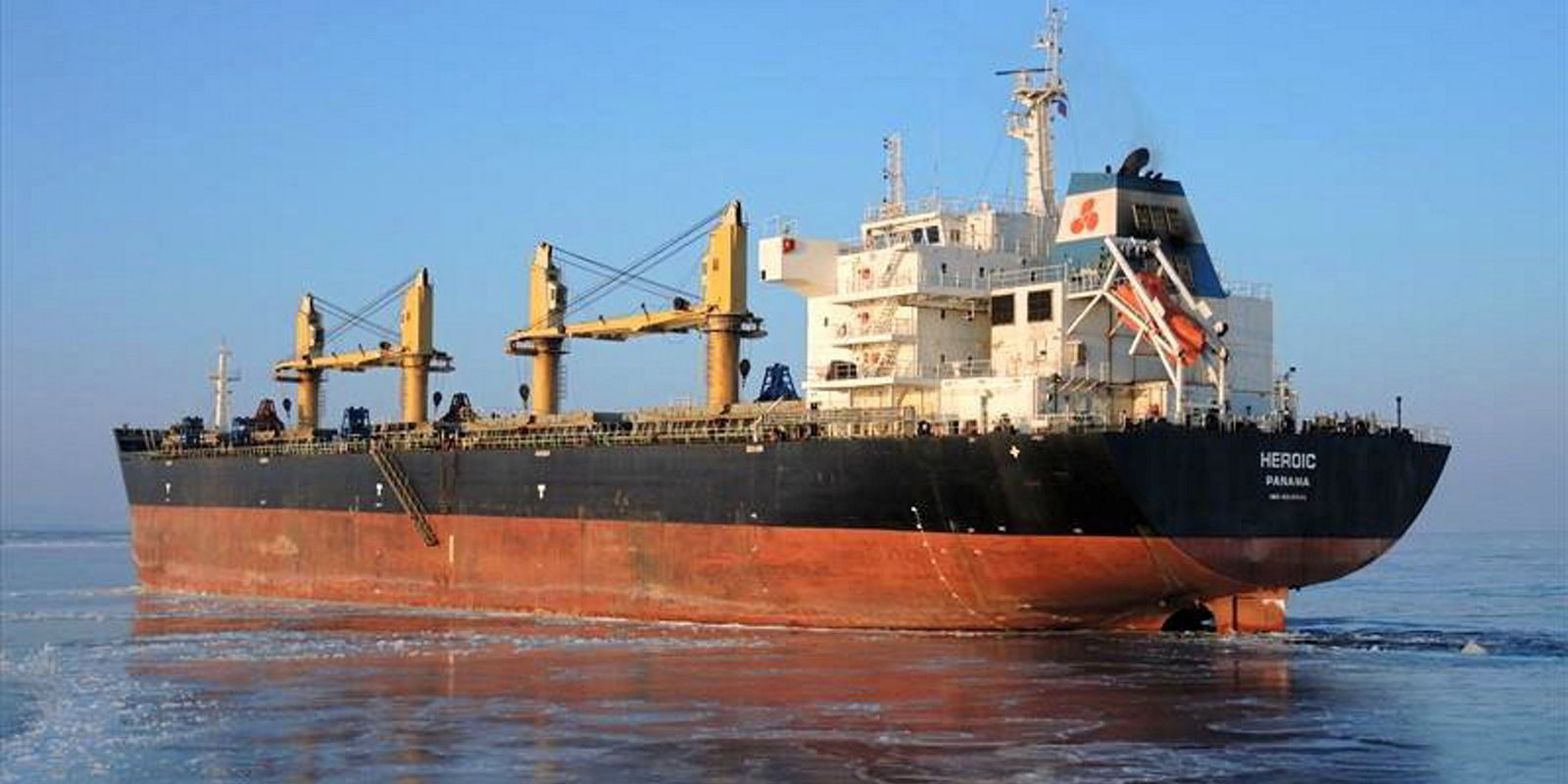Bulkers of up to ultramax size are leaving the congested container yards at terminals in southern China with boxes lashed to their decks and hatch covers as shippers seek creative ways to beat the squeeze on the boxship market.
The move to put boxes on decks follows a trend seen earlier this year when open-hatch bulkers with box-shaped holds and multipurpose (MPP) vessels saw increased demand for boxes in their mix of cargoes, brokers told TradeWinds.
Liner consultancy Alphaliner reported in January on an increasing demand for open-hatch bulkers and container-friendly MPP vessels to do the work of boxships, and that Zim had chartered the 62,000-dwt Cosco Shipping Honor (built 2020) to carry containers from China to Brazil.
The fresh shift in approach comes as demand for extraordinary solutions to container congestion is also driving increased enquiries for parcel cargoes of laden boxes below deck in standard bulkers with non-box-shaped holds.
Owners in Europe and China told TradeWinds they were aware of such offers and one confirmed having done such business but none were willing to speak on the record.
Safety concerns
Officials at one large bulker owner expressed reluctance to carry boxes but acknowledged doing so "from time to time".
"There are many logistical implications to this non-core business such as the loading and unloading of containers, stowage and lashing, bill of ladings, as well as safety concerns as bulk carriers are not designed to carry containers," said an official of the company.
But analyst Nicolai Hansteen of Oslo shipbrokers Lorentzen & Stemoco (L&S) confirmed demand for such topside cargoes on geared bulkers is increasing.
"These are China-to-Europe backhaul cargos, and obviously backhaul for dry cargo vessels is fronthaul for containers," added his colleague Anders Mortensen. "And it's mostly for containers on deck of supramax and ultramax."
The volumes involved are not likely to make a serious contribution to the current congestion crisis, especially at a time when both liner and dry bulk markets are strong.
Topside box enquiries are for about 100 teu, according to the L&S brokers, while parcels of 800 teu to 900 teu are said to be common as below-deck partial cargoes, according to one Chinese dry bulk shipowning executive.
But there are technical, legal, and commercial limits to such cargoes and not all owners find the extra business possible or worthwhile.
Some owners are unable to book boxes because of legal obstacles or ship construction issues. And some may steer clear of the commercial complication of handling separate bills of lading for each box.
"Not all charterparties permit this," said Hansteen, pointing to both round-trip charters as well as period charters from tonnage providers that excluded containers on deck.
Vessel construction can be an issue as well, because not all hatch covers are equally hardy.
"They are only asking for Chinese-built vessels because they have more steel," said Mortensen.
Identifying such trades is not easy. Oslo-based data service Oceanbolt, which uses satellite information to track bulker cargo flows and congestion in dry bulk, said box-on-bulkers activity is very hard to capture from space.
But founder Mads Andreasen said: "Container cargos being pushed back into bulk vessels is something that will happen when rates are high."








